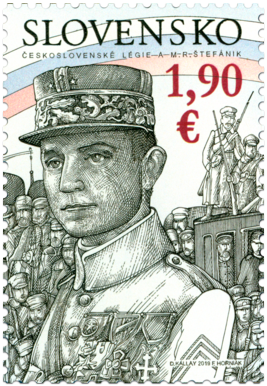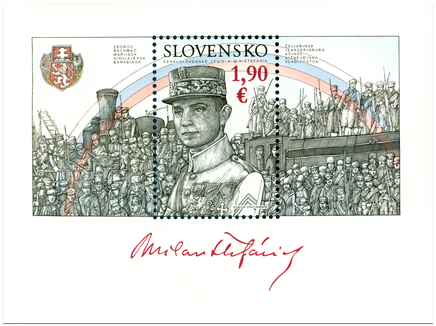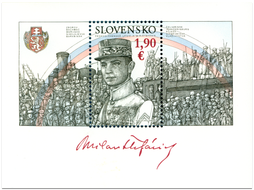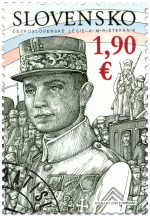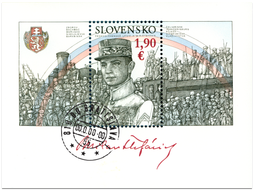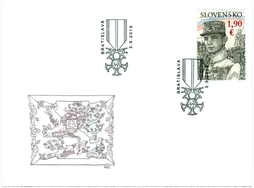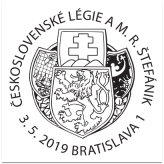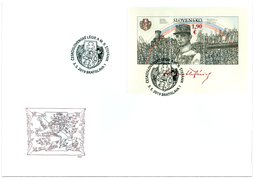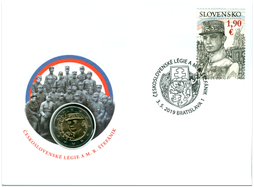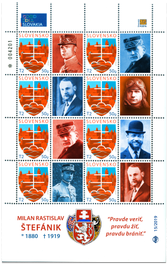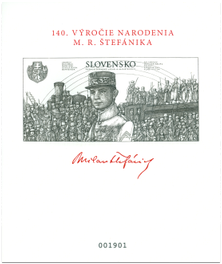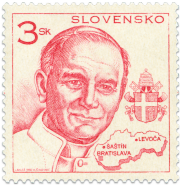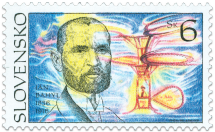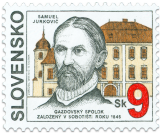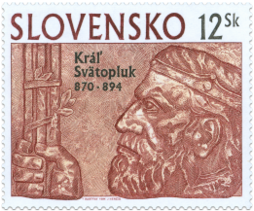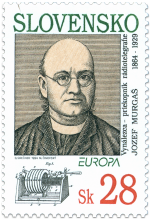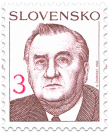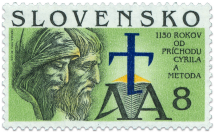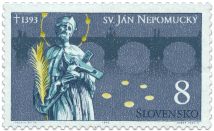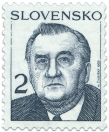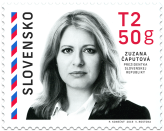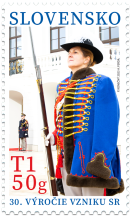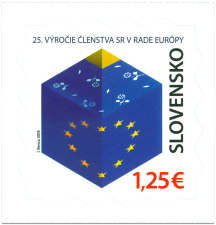This product is not for sale
This product is part of the following products
685 Date of issue
03.05.2019 Face value
1.90 €
On 4th May this year, we will commemorate the 100th anniversary of the tragic death of Milan Rastislav Štefánik near Ivanka pri Dunaji, in the vicinity of Bratislava. He was a Brigadier General in the French army, a leading figure of the exiled Czechoslovak resistance movement during the First World War and the Minister of War of the new state, which by this time, under the name, the Czechoslovak Republic, had already been recognized by the victorious allied powers.
The life of M. R. Štefánik was short, dramatic and eventful. He was born on 21st July 1880 in Košariská in Western Slovakia. After he finished his university studies, he pursued a scientific career, in France, in the field of astronomy, later he would become a French citizen. However, the major events in his life only happened after the outbreak of the First World War. He was conscripted into the air force as a corporal. After his first experience of the war at the Western Front, he was reassigned to the Serbian front, where he first saw the mass of Slovak hostages and at the end of 1915 he made a proposal to the French government suggesting the formation of Slovak Legions. His life changed dramatically, when at the beginning of 1916, together with T. G. Masaryk and E. Beneš, he started to establish the central control for the expatriate resistance of the Slovaks and Czechs against Austria-Hungary, which ultimately led to the establishment of the Czechoslovak National Council. He made a substantial contribution to its diplomatic and political recognition among the allied powers; however, his particularly valuable contribution was his building of the Czechoslovak army in exile, known as the Czechoslovak Legion, which was made up of the Slovak and Czech hostages of the Austrian-Hungarian army. Slovaks and Czechs would particularly remember the Russian legion, which consisted of more than 60,000 soldiers. However, the legions in France (9,600 soldiers) and in Italy, with around 20,000 soldiers, their numbers subsequently reached 60,000 after the armistice was signed, were no less important.
The stamp shows the portrait of M. R. Štefánik, in the background we can see Russian legionaries on train wagons. It commemorates the most famous period of the Russian legion, at the time when they took control of almost the entire Trans-Siberian Railway, from the Urals to Vladivostok. The surcharge of the cover shows one of the widely used symbols of the legionnaires in the First World War.
Anton Hrnko
Similar products
68 Date of issue
29.05.1995
63 Date of issue
20.04.1995
55 Date of issue
08.02.1995
37 Date of issue
20.07.1994
30 Date of issue
27.05.1994
19 Date of issue
03.11.1993
14 Date of issue
22.06.1993
6 Date of issue
11.03.1993
5 Date of issue
02.03.1993
688 Date of issue
15.06.2019
784 Date of issue
02.01.2023
666 Date of issue
27.06.2018
© 2024 POFIS - Postal philatelic service. All rights reserved

